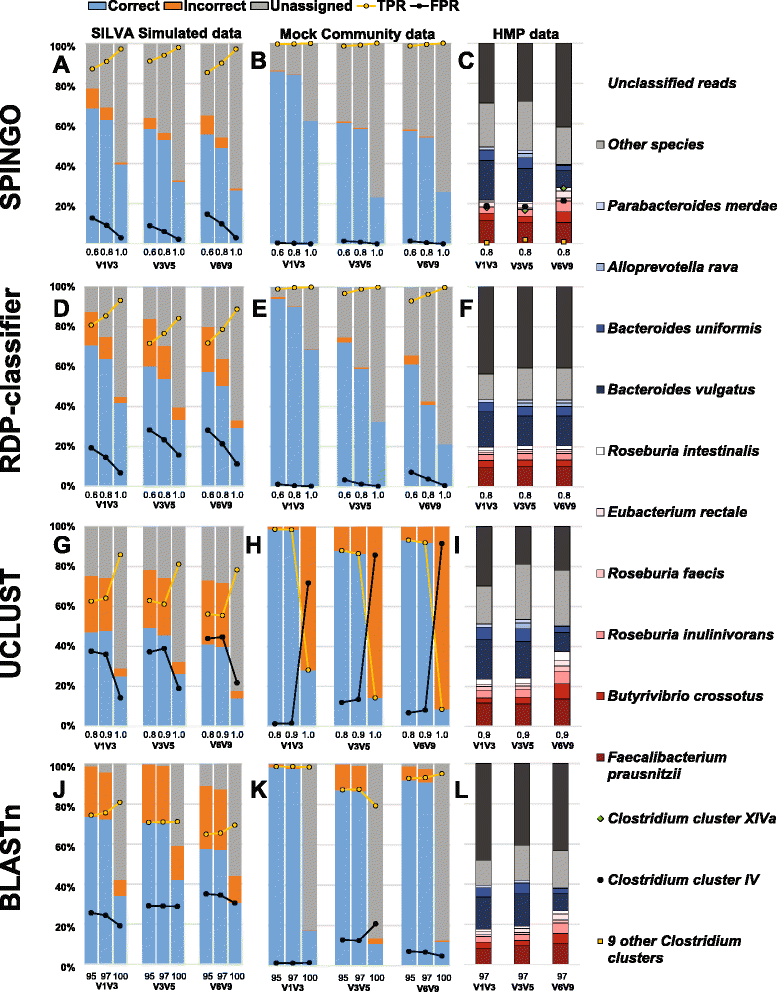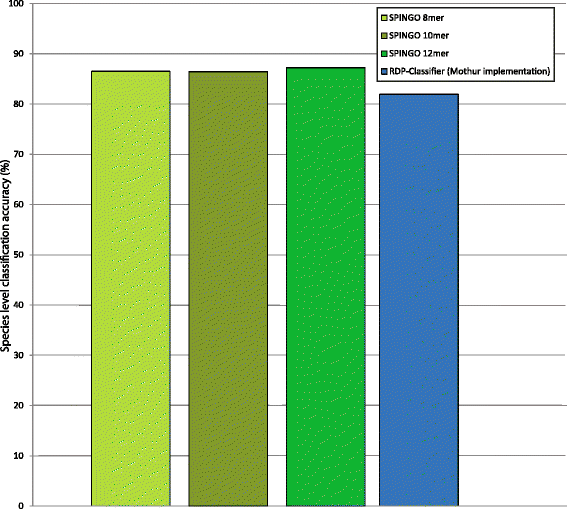SPINGO: a rapid species-classifier for microbial amplicon sequences
- PMID: 26450747
- PMCID: PMC4599320
- DOI: 10.1186/s12859-015-0747-1
SPINGO: a rapid species-classifier for microbial amplicon sequences
Abstract
Background: Taxonomic classification is a corner stone for the characterisation and comparison of microbial communities. Currently, most existing methods are either slow, restricted to specific communities, highly sensitive to taxonomic inconsistencies, or limited to genus level classification. As crucial microbiota information is hinging on high-level resolution it is imperative to increase taxonomic resolution to species level wherever possible.
Results: In response to this need we developed SPINGO, a flexible and stand-alone software dedicated to high-resolution assignment of sequences to species level using partial 16S rRNA gene sequences from any environment. SPINGO compares favourably to other methods in terms of classification accuracy, and is as fast or faster than those that have higher error rates. As a demonstration of its flexibility for other types of target genes we successfully applied SPINGO also on cpn60 amplicon sequences.
Conclusions: SPINGO is an accurate, flexible and fast method for low-level taxonomic assignment. This combination is becoming increasingly important for rapid and accurate processing of amplicon data generated by newer next generation sequencing technologies.
Figures




References
-
- Nakayama J, Jiang J, Watanabe K, Chen K, Ninxin H, Matsuda K, Kurakawa T, Tsuji H, Sonomoto K, Lee YK. Up to species-level community analysis of human Gut microbiota by 16S rRNA amplicon pyrosequencing. Bioscience of Microbiota, Food and Health. 2013;32(2):69–76. doi: 10.12938/bmfh.32.69. - DOI - PMC - PubMed
Publication types
MeSH terms
Substances
LinkOut - more resources
Full Text Sources
Other Literature Sources
Research Materials

